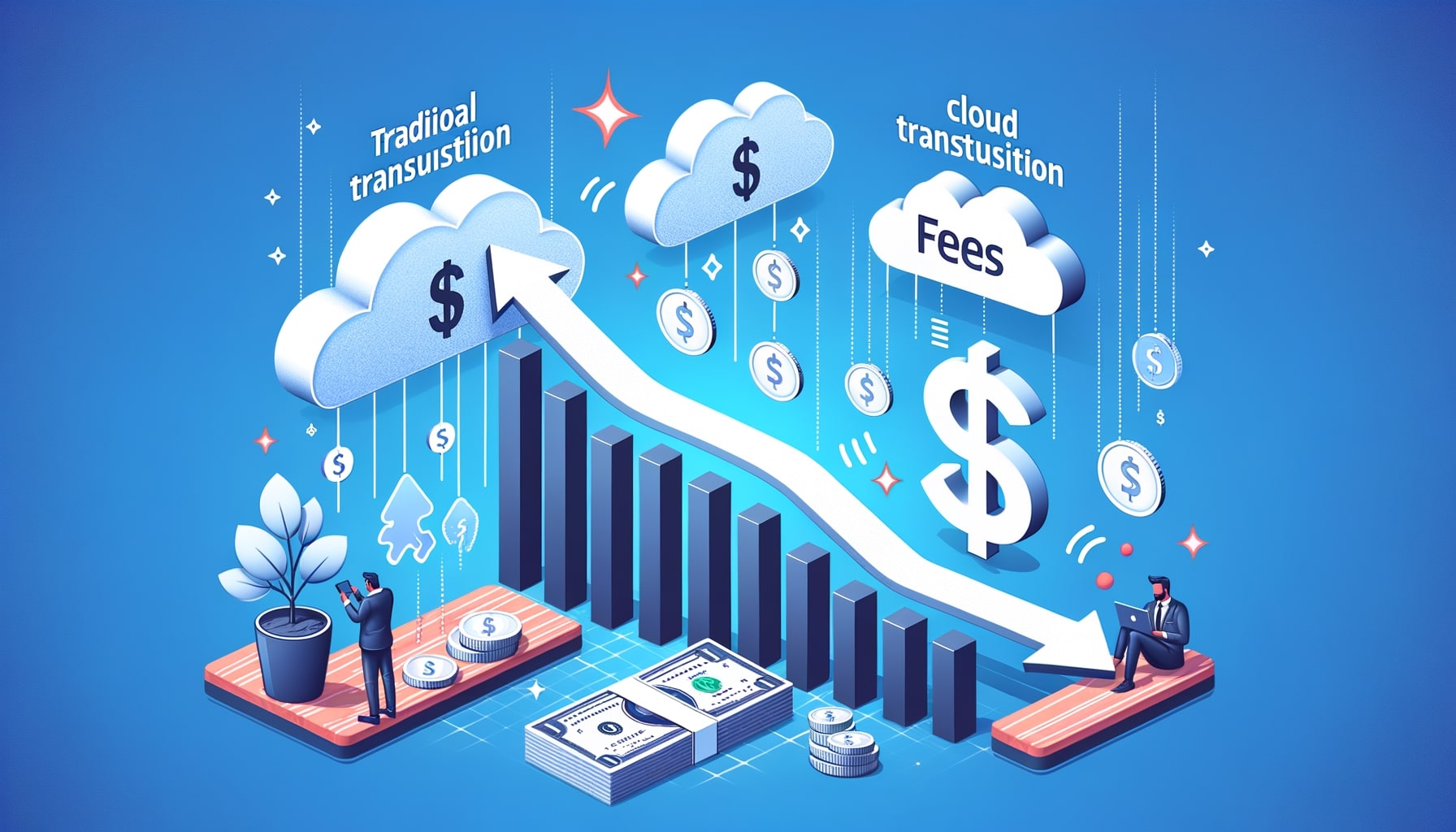Green Computing Initiatives in Payment Cloud Infrastructure
The rapid expansion of cloud-based services, particularly in the payment industry, has led to significant energy consumption and environmental impacts. However, with increasing awareness and concern over environmental sustainability, businesses are turning towards green computing initiatives. This guide delves into how companies in the payment sector can implement these initiatives within their cloud infrastructure to achieve efficiency and sustainability.
Definition of Green Computing

Green computing, also known as sustainable computing or eco-friendly computing, refers to the practice of designing, manufacturing, using, and disposing of computer systems and their components in an environmentally responsible manner. It involves minimizing the use of energy, reducing carbon emissions, managing e-waste, and conserving resources throughout the lifecycle of computing systems.
Importance of Green Computing in Payment Cloud Infrastructure
The environmental impact of payment cloud infrastructure cannot be ignored. These systems consume a significant amount of energy, contribute to carbon emissions, generate e-waste, and require substantial water usage. By implementing green computing initiatives, businesses can reduce their ecological footprint and contribute to a more sustainable future.
The Environmental Impact of Payment Cloud Infrastructure
As digital transactions continue to dominate the financial landscape, the infrastructure that supports these transactions—primarily cloud-based services—is growing exponentially. This growth, while beneficial for the economy and convenience, harbors significant environmental impacts. Let’s explores the ecological footprint of payment cloud infrastructure and discusses measures to mitigate its environmental effects.
Energy consumption and carbon footprint
Payment cloud infrastructure relies on data centers that consume massive amounts of energy. According to a report by the Natural Resources Defense Council (NRDC), data centers in the United States alone consumed approximately 91 billion kilowatt-hours of electricity in 2013, resulting in the emission of 100 million metric tons of carbon dioxide. This is equivalent to the emissions of 34 coal-fired power plants.
E-waste management and recycling

As technology advances, the lifespan of electronic devices decreases, leading to a significant increase in electronic waste or e-waste. Payment cloud infrastructure relies on a multitude of servers, storage devices, and networking equipment, which eventually become obsolete and need to be replaced. Proper e-waste management and recycling practices are essential to prevent hazardous materials from polluting the environment and to recover valuable resources.
Water usage and conservation
Data centers require substantial amounts of water for cooling purposes. The cooling systems used in these facilities consume vast quantities of water, contributing to water scarcity in regions where water resources are already strained. Implementing water conservation measures and exploring alternative cooling technologies can help mitigate the water usage associated with payment cloud infrastructure.
Green Computing Strategies for Payment Cloud Infrastructure
Green computing is essential in the era of digital transformation, especially for cloud infrastructures that handle sensitive and resource-intensive tasks like payment processing. Adopting sustainable practices not only helps in reducing environmental impact but also enhances the efficiency and cost-effectiveness of the operations. Here are several strategies for implementing green computing in payment cloud infrastructure:
Virtualization and server consolidation
Virtualization is a key strategy in green computing for payment cloud infrastructure. By consolidating multiple physical servers into virtual machines, businesses can reduce the number of physical servers required, leading to significant energy savings. Virtualization also improves resource utilization and allows for better scalability and flexibility.
Energy-efficient hardware and data centers
Investing in energy-efficient hardware and designing energy-efficient data centers is crucial for reducing the energy consumption of payment cloud infrastructure. Energy-efficient hardware components, such as processors, memory modules, and storage devices, consume less power while delivering the required performance. Data centers can be designed with energy-efficient cooling systems, efficient power distribution, and intelligent monitoring and management systems.
Renewable energy sources for powering data centers
One of the most impactful green computing strategies for payment cloud infrastructure is the use of renewable energy sources to power data centers. By harnessing solar, wind, hydro, or geothermal energy, businesses can significantly reduce their carbon footprint and reliance on fossil fuels. Many companies are already investing in renewable energy projects or purchasing renewable energy credits to offset their energy consumption.
Optimizing Energy Efficiency in Payment Cloud Infrastructure
Optimizing energy efficiency in payment cloud infrastructure is crucial for reducing operational costs and minimizing environmental impact. As digital payments continue to grow, so does the energy consumption of the data centers that process and store these transactions. Implementing strategies for energy optimization not only benefits the environment but also enhances the sustainability and scalability of payment systems. Here are some effective strategies to optimize energy efficiency in payment cloud infrastructure:
Power management techniques
Implementing power management techniques can significantly improve the energy efficiency of payment cloud infrastructure. This includes features such as power capping, dynamic voltage and frequency scaling, and sleep modes for idle devices. By intelligently managing power consumption, businesses can reduce energy waste and lower their electricity bills.
Dynamic workload management
Dynamic workload management involves optimizing the allocation of computing resources based on the current demand. By dynamically scaling up or down the number of servers and virtual machines, businesses can ensure that resources are utilized efficiently, reducing energy consumption during periods of low demand.
Cooling and ventilation systems
Data centers require efficient cooling and ventilation systems to maintain optimal operating temperatures for servers and networking equipment. By implementing advanced cooling technologies, such as liquid cooling or free cooling, businesses can reduce the energy required for cooling and minimize water usage.
Green Data Storage Solutions for Payment Cloud Infrastructure
Green data storage solutions not only support sustainability goals but also help reduce operational costs. Implementing eco-friendly practices in data storage can significantly contribute to a greener digital environment. Here are key strategies for integrating green data storage solutions into payment cloud infrastructure:
Data deduplication and compression
Data deduplication and compression techniques can significantly reduce the storage requirements of payment cloud infrastructure. By identifying and eliminating duplicate data and compressing files, businesses can optimize storage utilization and reduce the energy consumption associated with storing and retrieving data.
Tiered storage and archiving
Implementing tiered storage and archiving solutions allows businesses to store data on different types of storage media based on its importance and access frequency. Frequently accessed data can be stored on high-performance storage devices, while less frequently accessed data can be moved to lower-cost, energy-efficient storage options. Archiving infrequently accessed data to offline or nearline storage further reduces energy consumption.
Cloud-based storage options
Cloud-based storage solutions offer several green computing advantages for payment cloud infrastructure. By leveraging the scalability and resource pooling capabilities of cloud providers, businesses can reduce their physical storage infrastructure, leading to energy savings. Cloud providers also have the ability to optimize their data centers for energy efficiency, further reducing the environmental impact.
Green Networking Practices in Payment Cloud Infrastructure
Adopting green networking practices in payment cloud infrastructure is essential for companies looking to reduce their carbon footprint while maintaining efficient and secure transaction processing. As digital payments continue to rise, the underlying network infrastructure must not only be robust but also environmentally conscious. Here are effective green networking strategies for payment cloud infrastructure:
Network virtualization and software-defined networking
Network virtualization and software-defined networking (SDN) enable businesses to create virtual networks that are decoupled from the underlying physical infrastructure. This allows for better resource utilization, improved network efficiency, and reduced energy consumption. SDN also enables dynamic network provisioning and optimization, leading to further energy savings.
Traffic optimization and load balancing
Efficient traffic optimization and load balancing techniques can reduce network congestion and improve overall network performance. By intelligently routing traffic and distributing workloads across multiple servers, businesses can minimize energy waste and ensure optimal utilization of network resources.
Energy-efficient network equipment
Investing in energy-efficient network equipment, such as switches and routers, is crucial for reducing the energy consumption of payment cloud infrastructure. Energy-efficient network devices are designed to consume less power during operation and have advanced power management features, such as sleep modes and intelligent power scaling.
Security and Privacy Considerations in Green Computing Initiatives
Security and privacy are paramount concerns in any IT endeavor, but they become even more crucial when implementing green computing initiatives. As organizations strive to reduce their environmental impact through energy-efficient practices and equipment, they must also ensure that these green strategies do not compromise data security or user privacy. Here are key security and privacy considerations for green computing initiatives:
Data protection and encryption
Green computing initiatives should not compromise the security and privacy of payment cloud infrastructure. Implementing robust data protection measures, such as encryption and access controls, ensures that sensitive information is safeguarded while minimizing the energy required for security operations.
Compliance with regulations and standards
Businesses operating in the payment industry must comply with various regulations and standards related to data security, privacy, and environmental sustainability. Green computing initiatives should align with these regulations and standards to ensure legal and ethical compliance.
Secure disposal of electronic devices
Proper disposal of electronic devices is essential to prevent data breaches and environmental pollution. Green computing initiatives should include secure disposal practices, such as data wiping and recycling, to ensure that electronic devices are disposed of in an environmentally responsible manner.
Frequently Asked Questions
Q.1: What is the cost of implementing green computing initiatives?
Answer: The cost of implementing green computing initiatives in payment cloud infrastructure varies depending on the scale and complexity of the infrastructure. While there may be upfront costs associated with hardware upgrades, data center redesign, and renewable energy investments, the long-term cost savings from reduced energy consumption and improved resource utilization often outweigh the initial investment.
Q.2: How can green computing improve the performance of payment cloud infrastructure?
Answer: Green computing initiatives, such as virtualization, dynamic workload management, and traffic optimization, can improve the performance of payment cloud infrastructure by maximizing resource utilization, reducing network congestion, and ensuring optimal energy efficiency. This leads to better scalability, flexibility, and responsiveness of the infrastructure.
Q.3: Are there any certifications or standards for green computing in the payment industry?
Answer: Yes, there are certifications and standards for green computing in the payment industry. The Leadership in Energy and Environmental Design (LEED) certification is widely recognized for sustainable building design and operation. The Electronic Product Environmental Assessment Tool (EPEAT) certification evaluates the environmental impact of electronic products. Additionally, organizations like the Green Grid and the U.S. Environmental Protection Agency (EPA) provide guidelines and benchmarks for energy-efficient data centers.
Conclusion
In conclusion, green computing initiatives play a vital role in ensuring the sustainability of payment cloud infrastructure. By implementing strategies such as virtualization, energy-efficient hardware, renewable energy sources, and green networking practices, businesses can significantly reduce their environmental impact while improving the performance and efficiency of their payment systems. Embracing green computing is not only a responsible choice but also a strategic one, as it aligns with the growing demand for environmentally conscious solutions. By following the steps outlined in this guide and staying informed about future trends and advancements in green computing, businesses can contribute to a greener and more sustainable payment industry.










